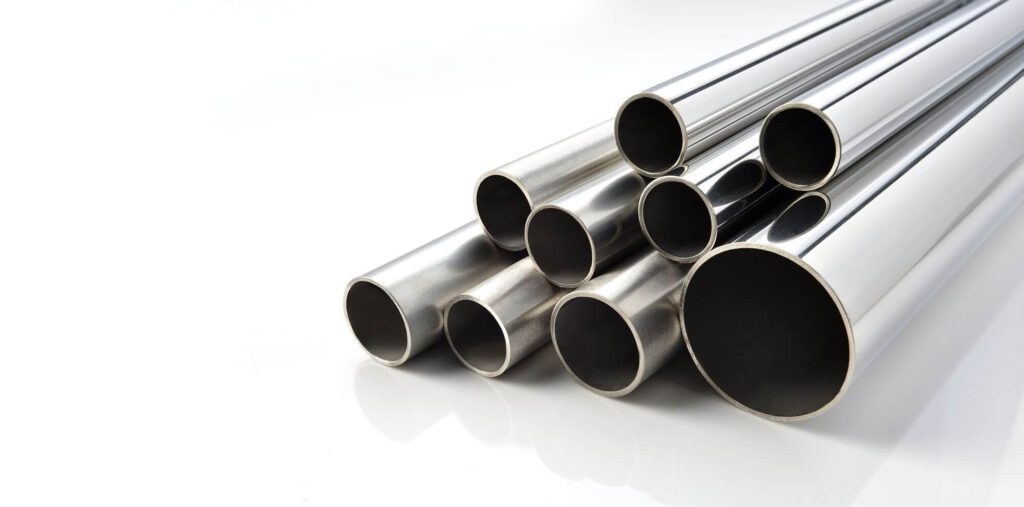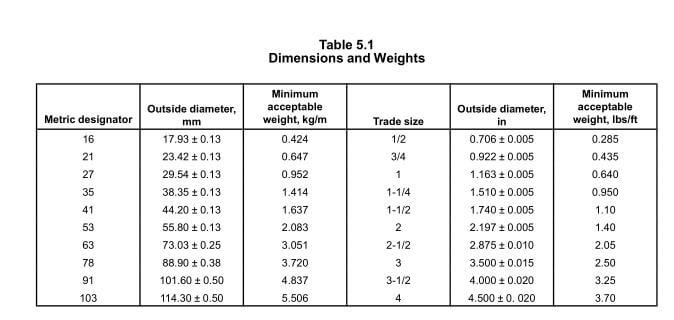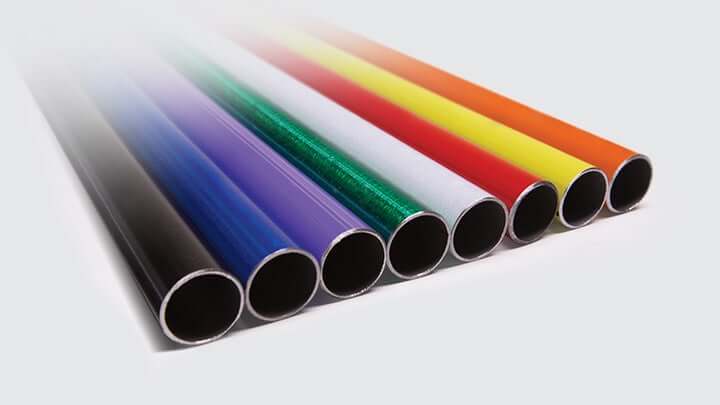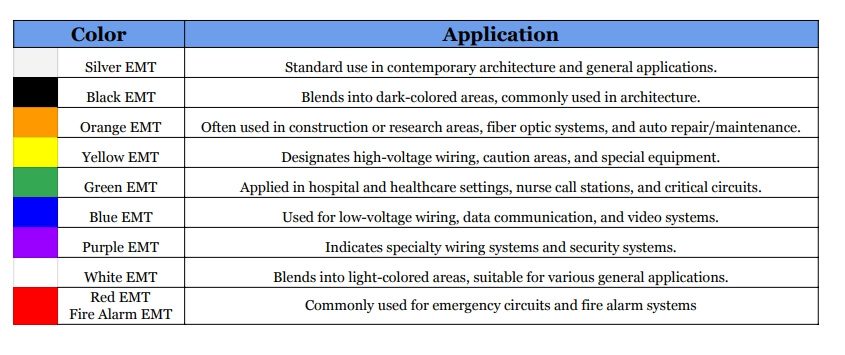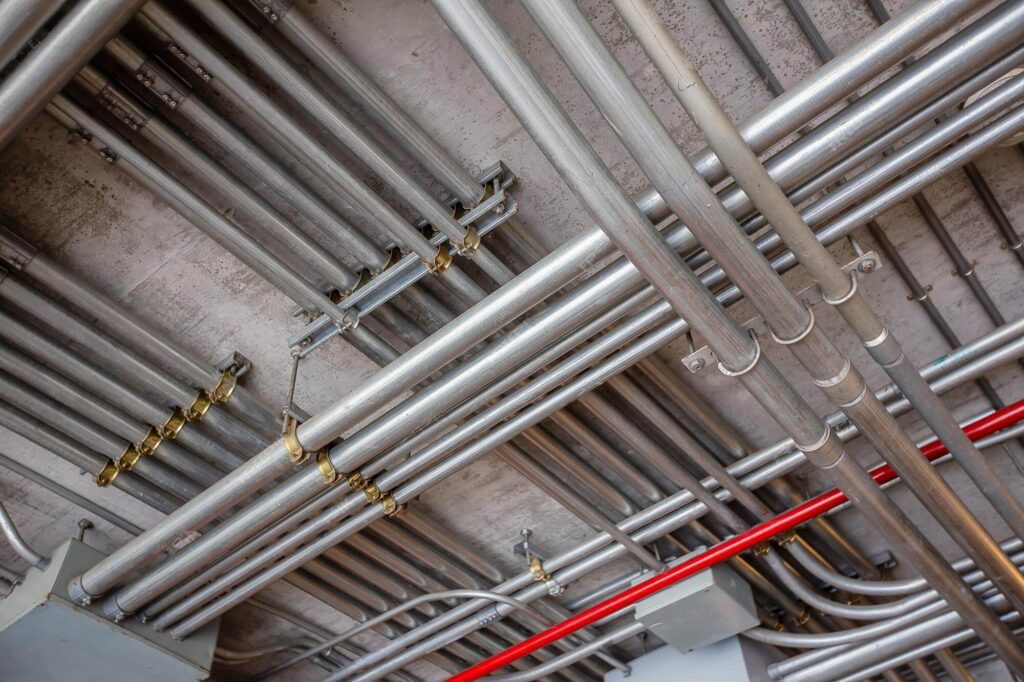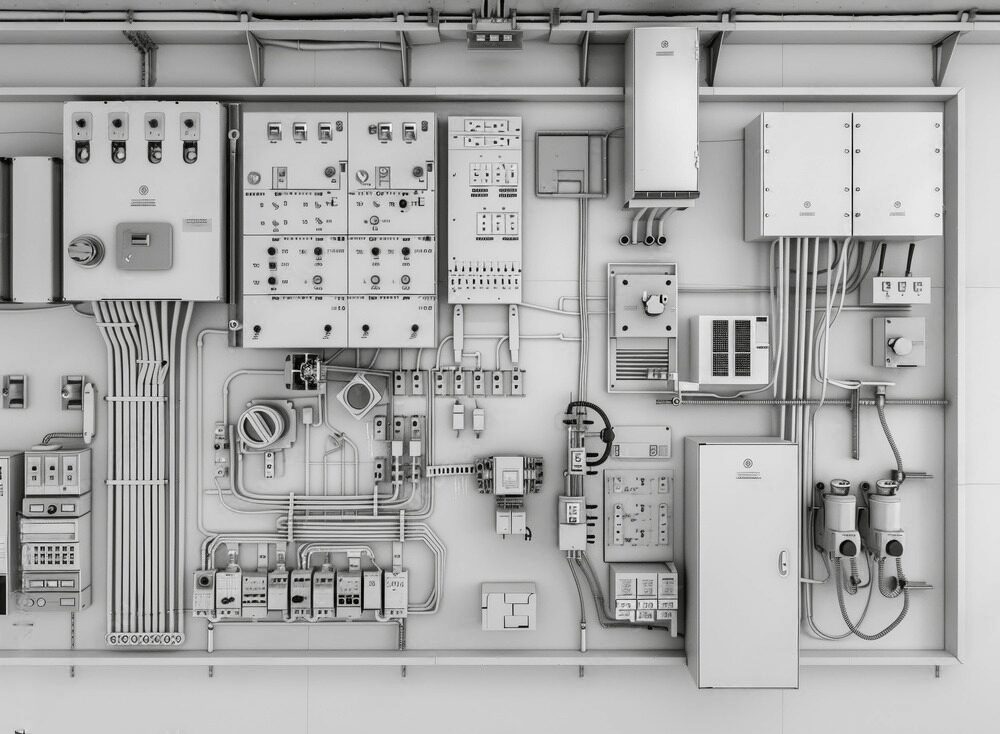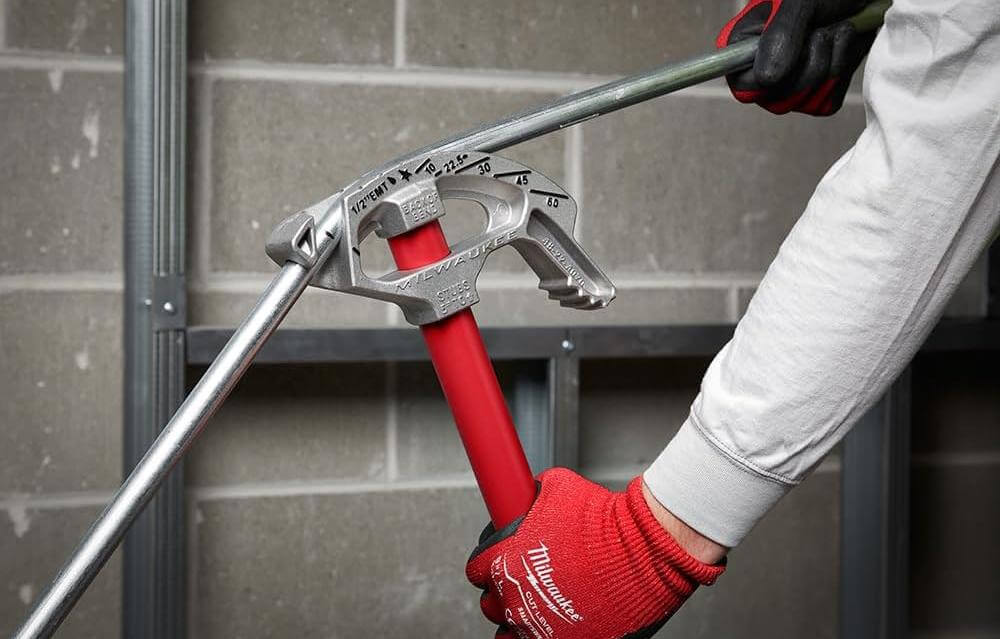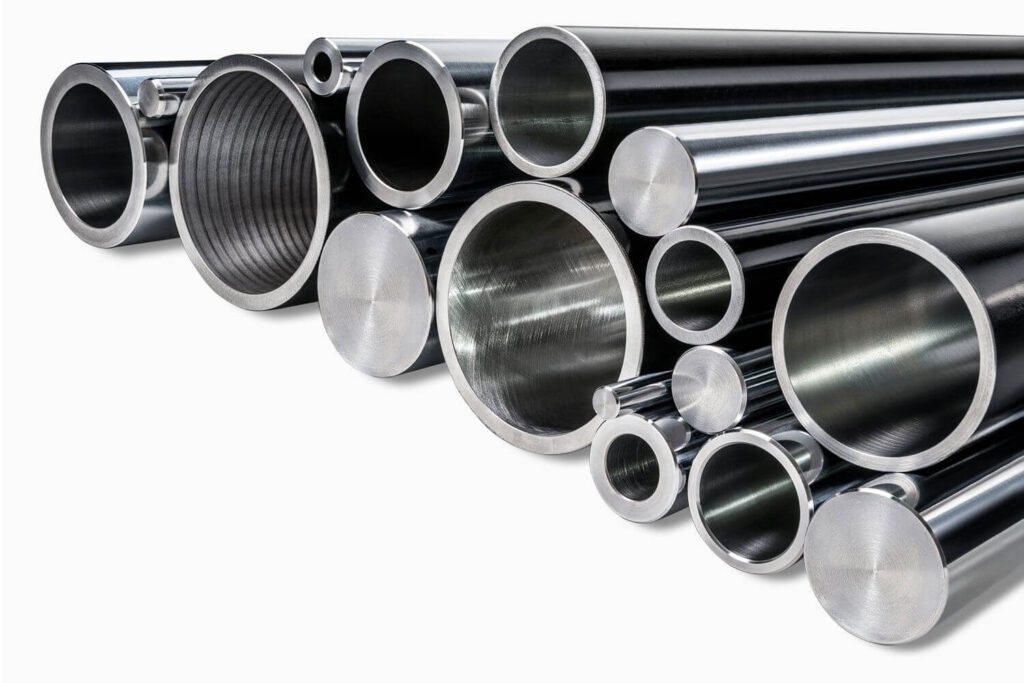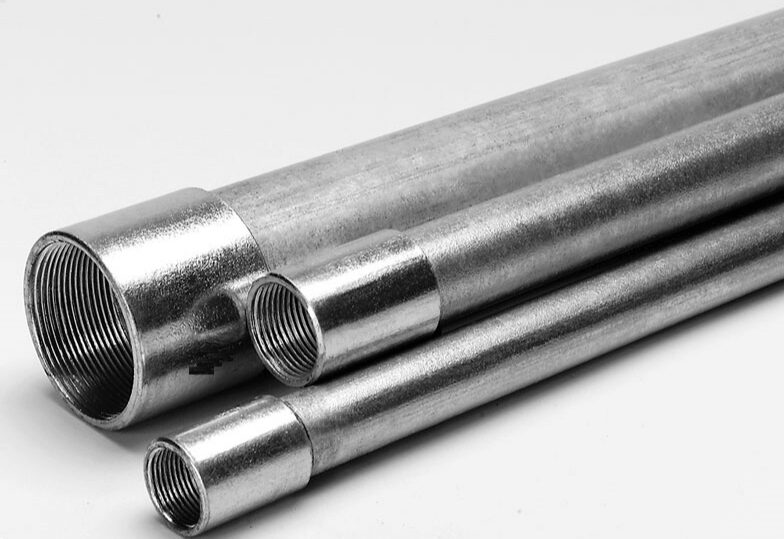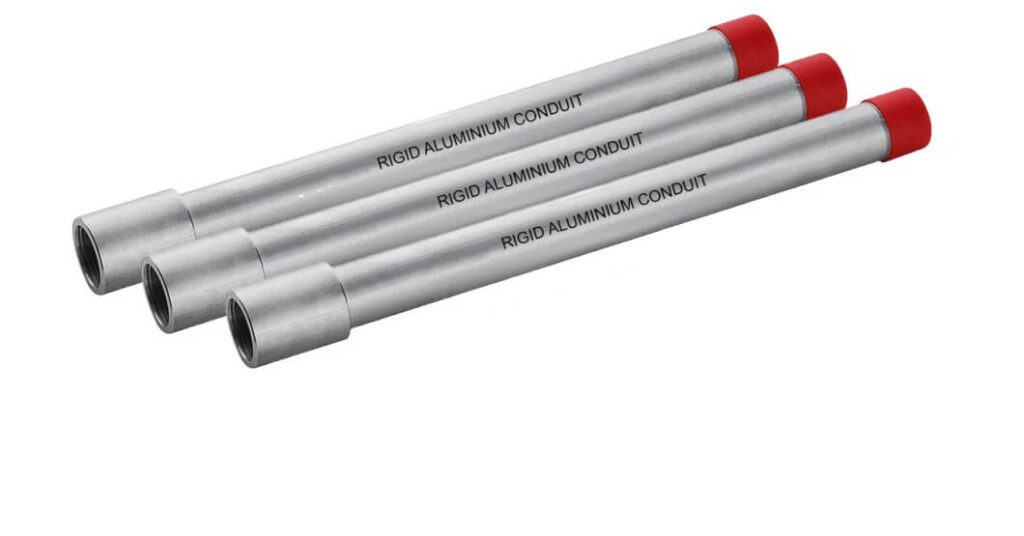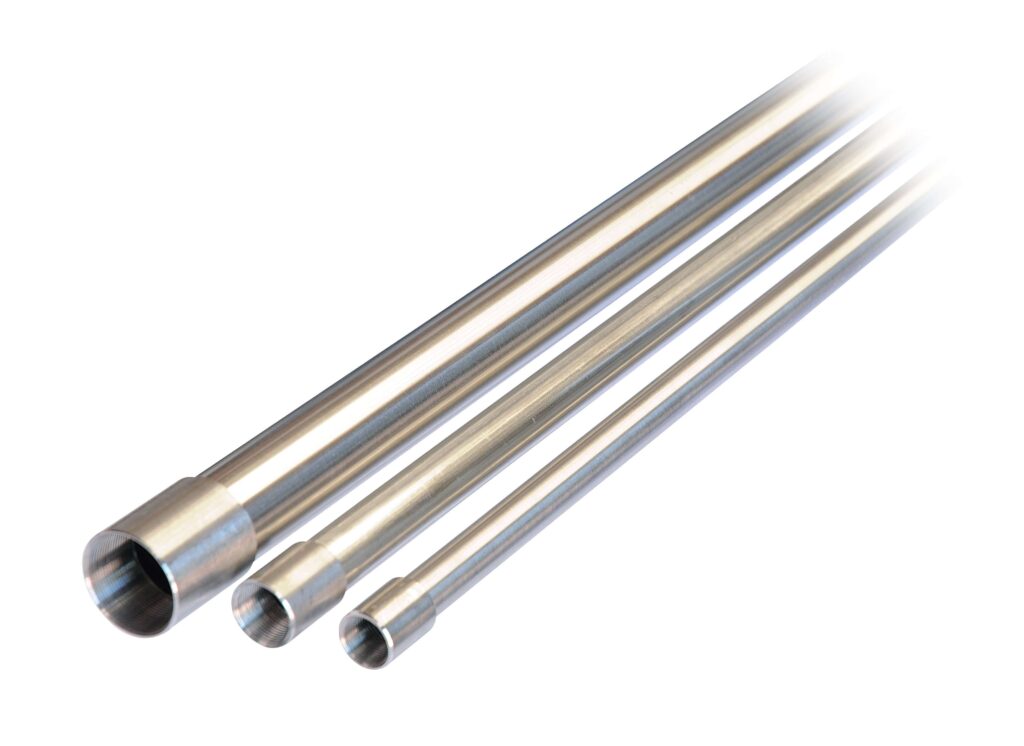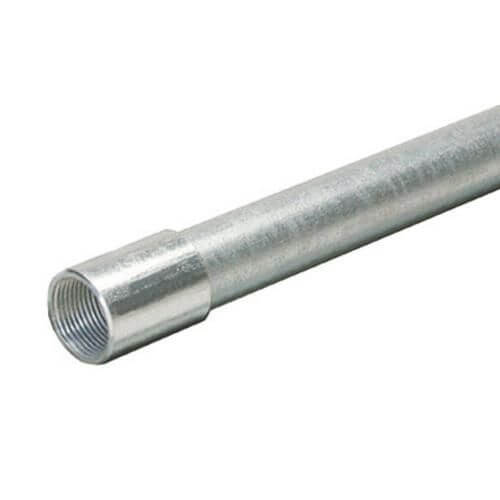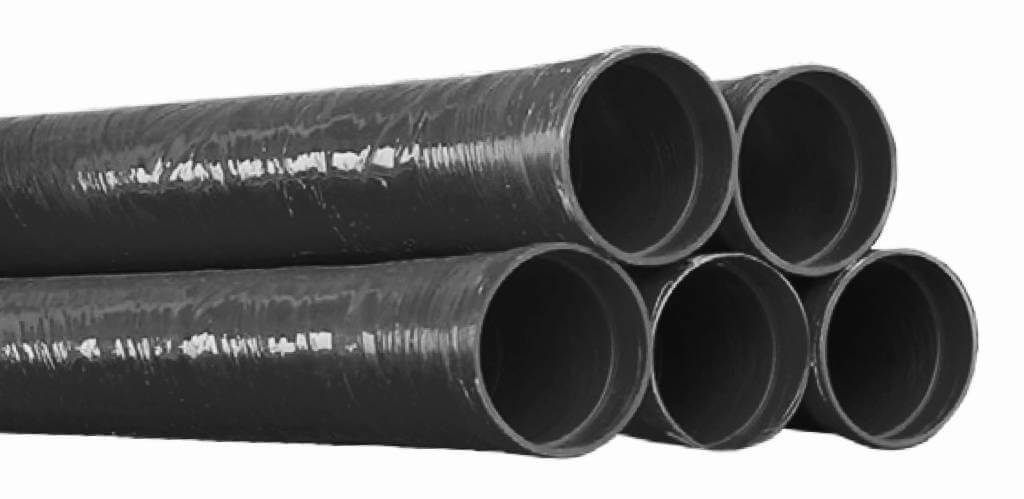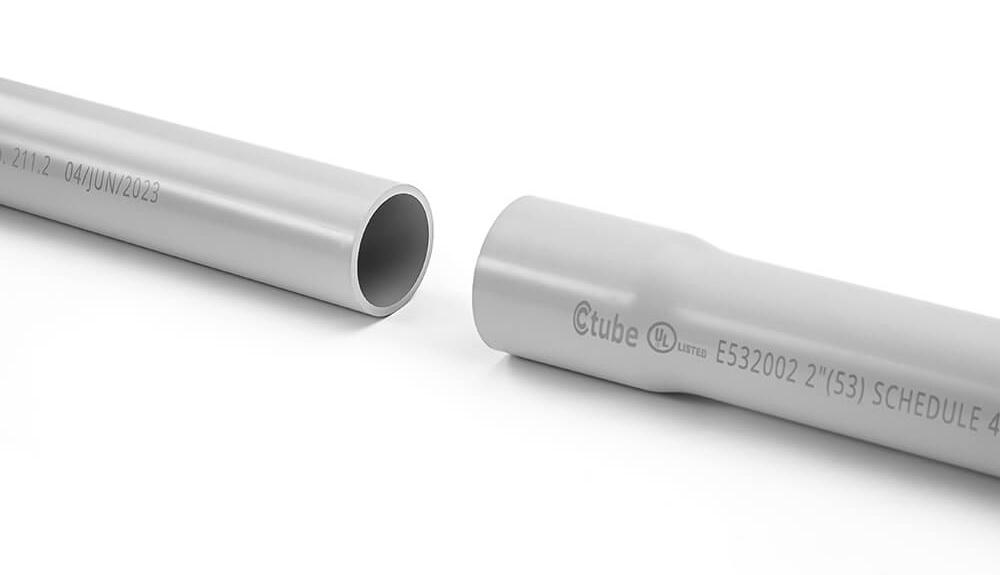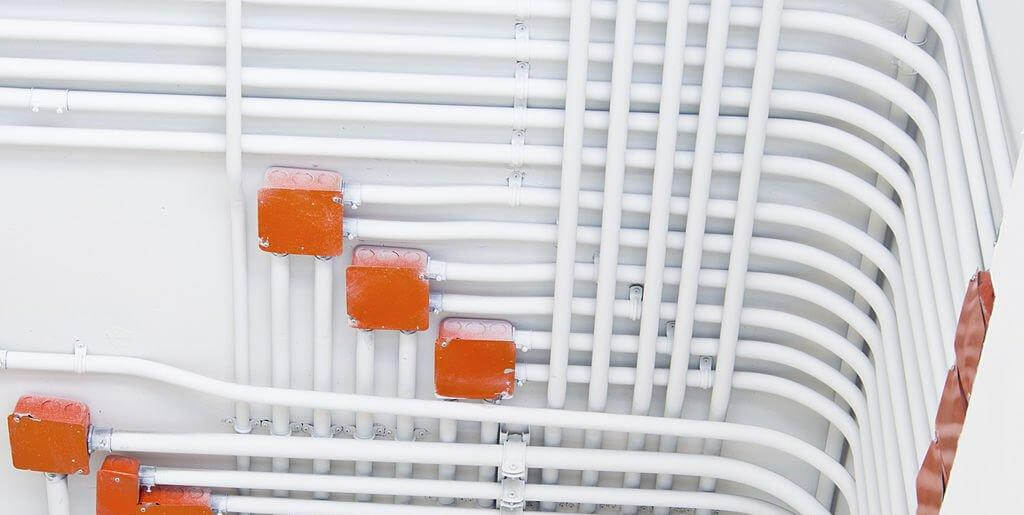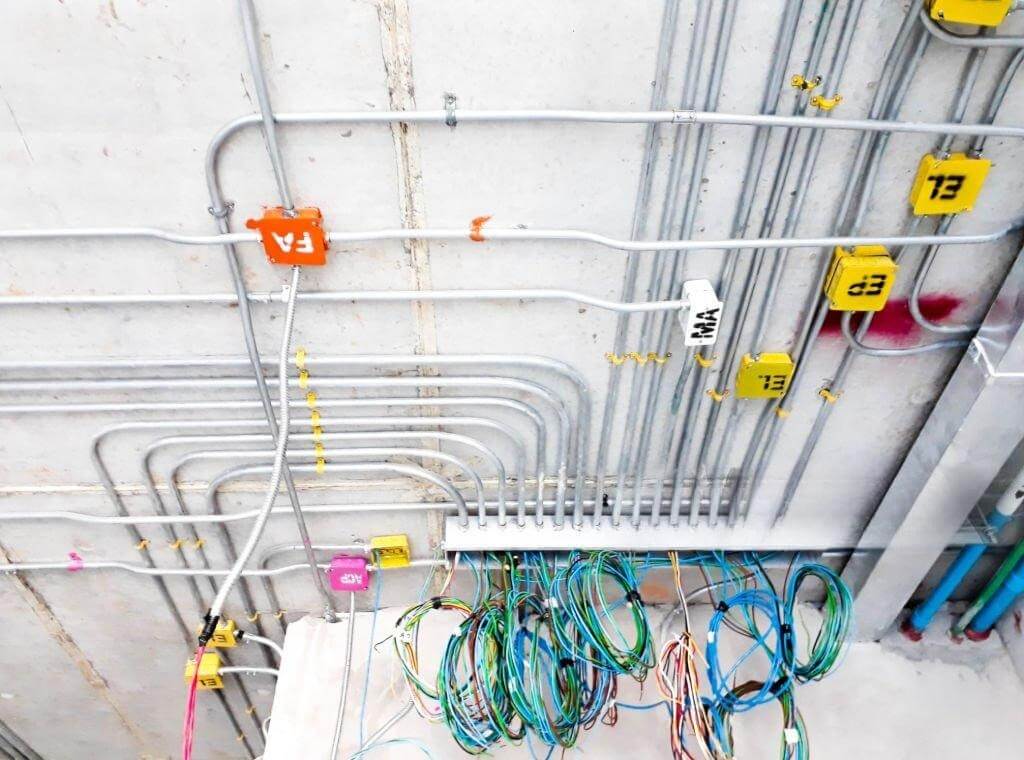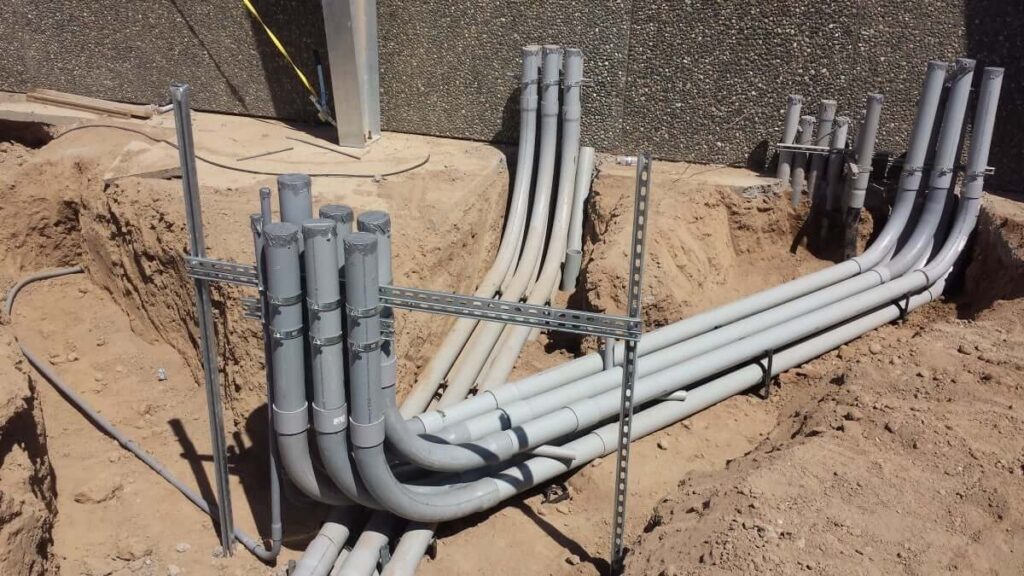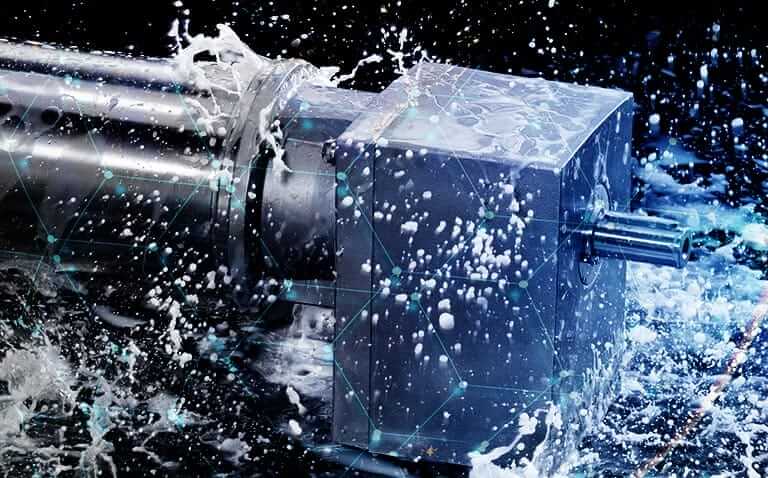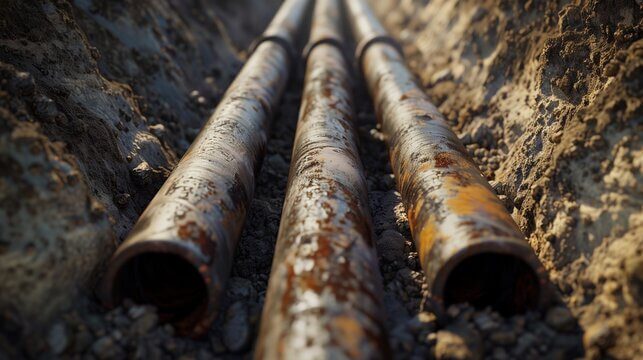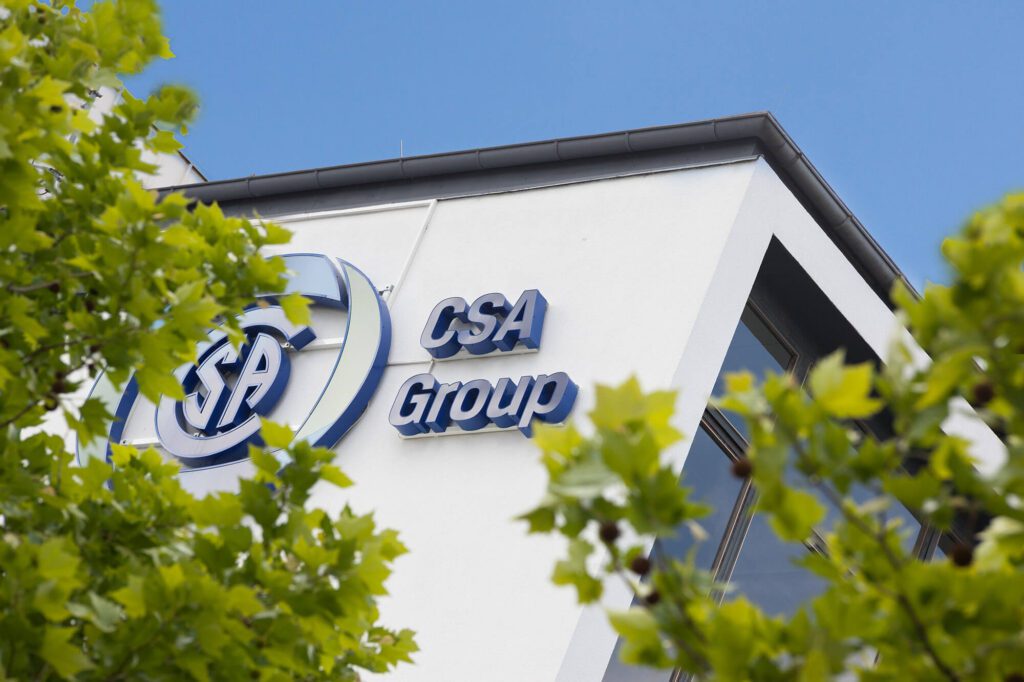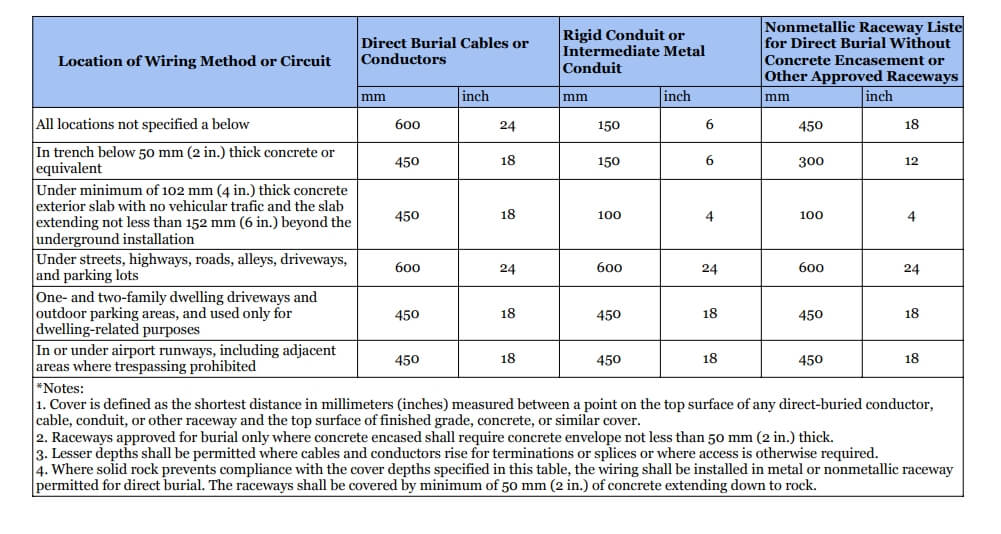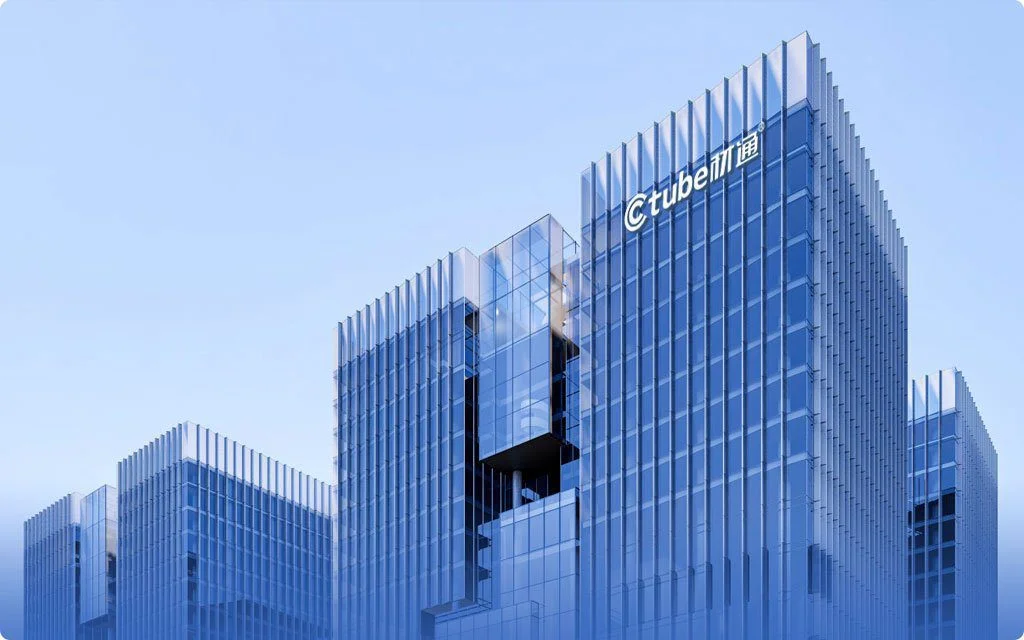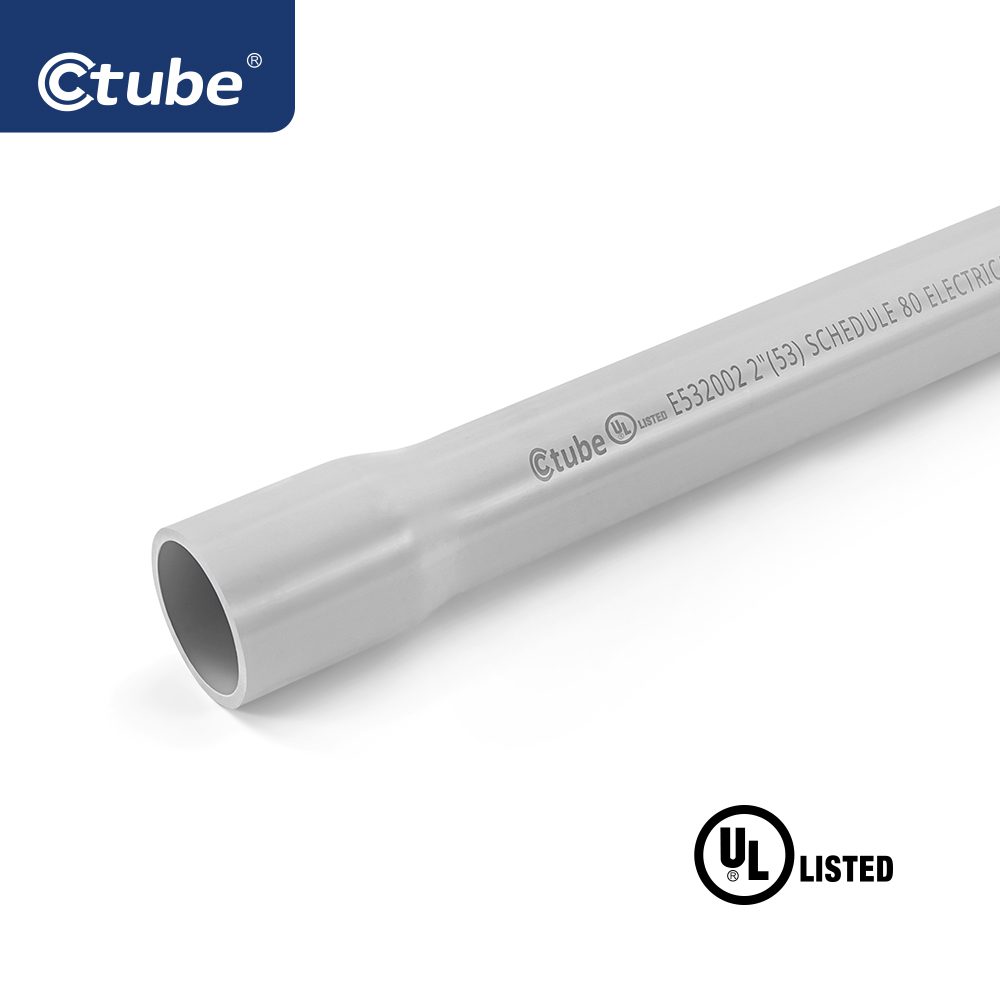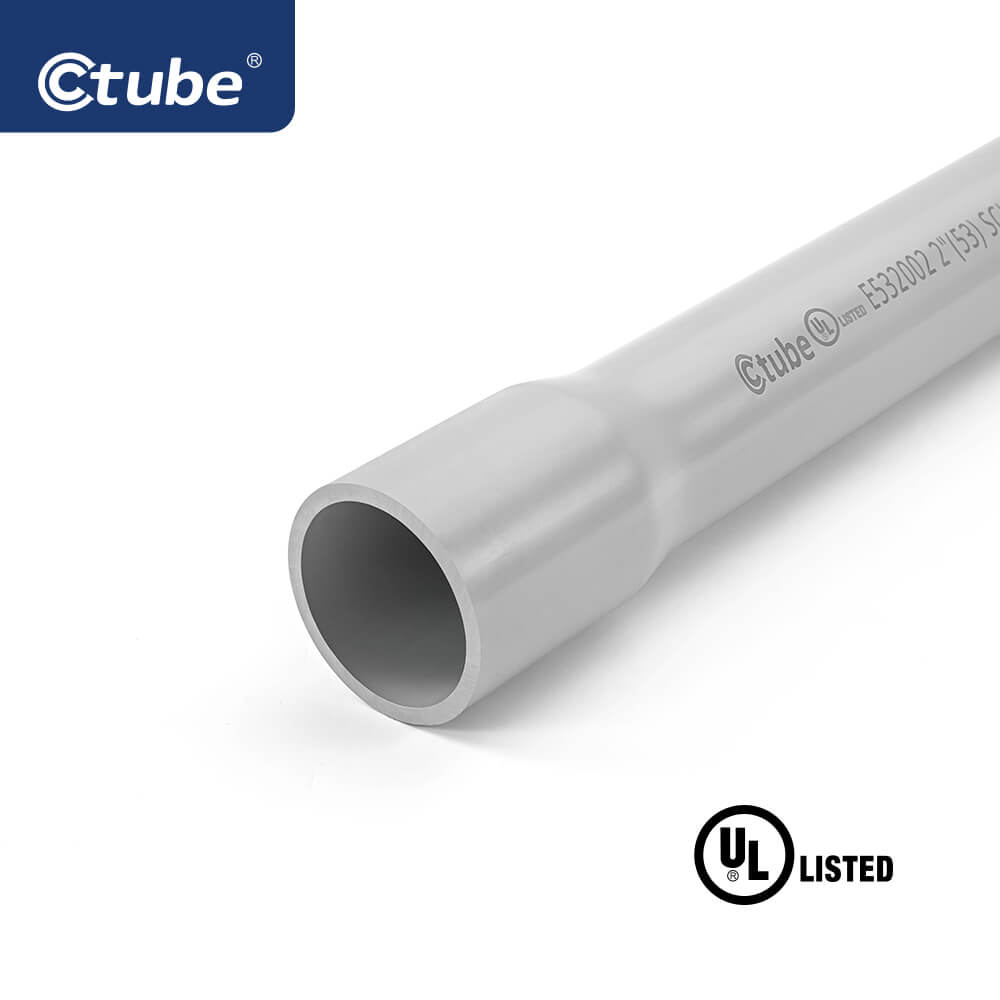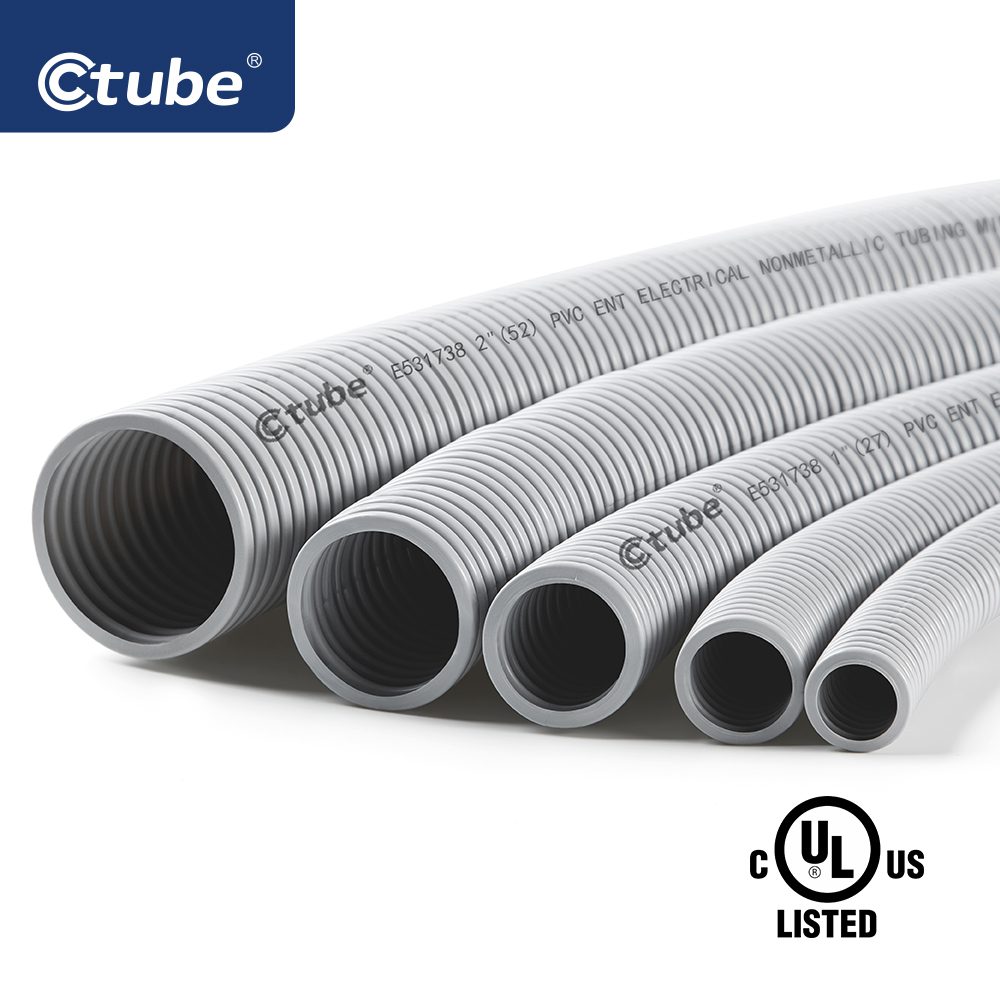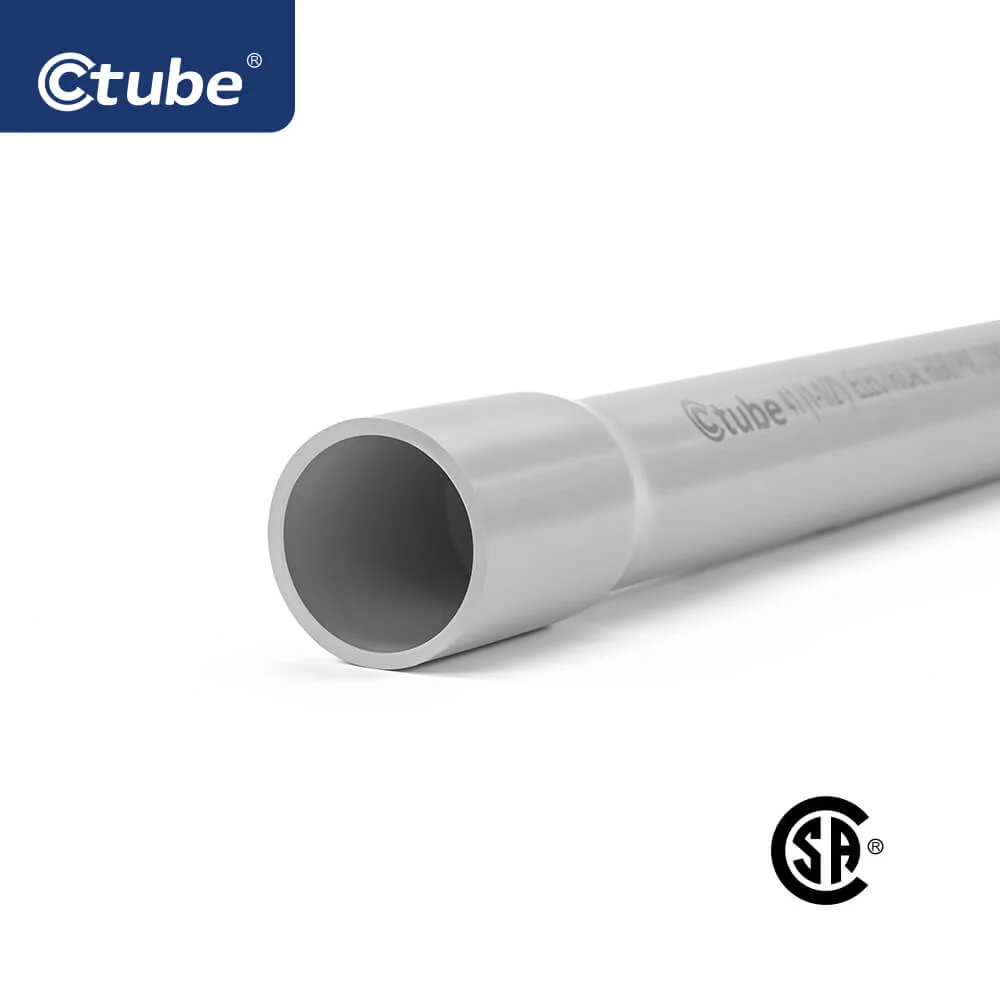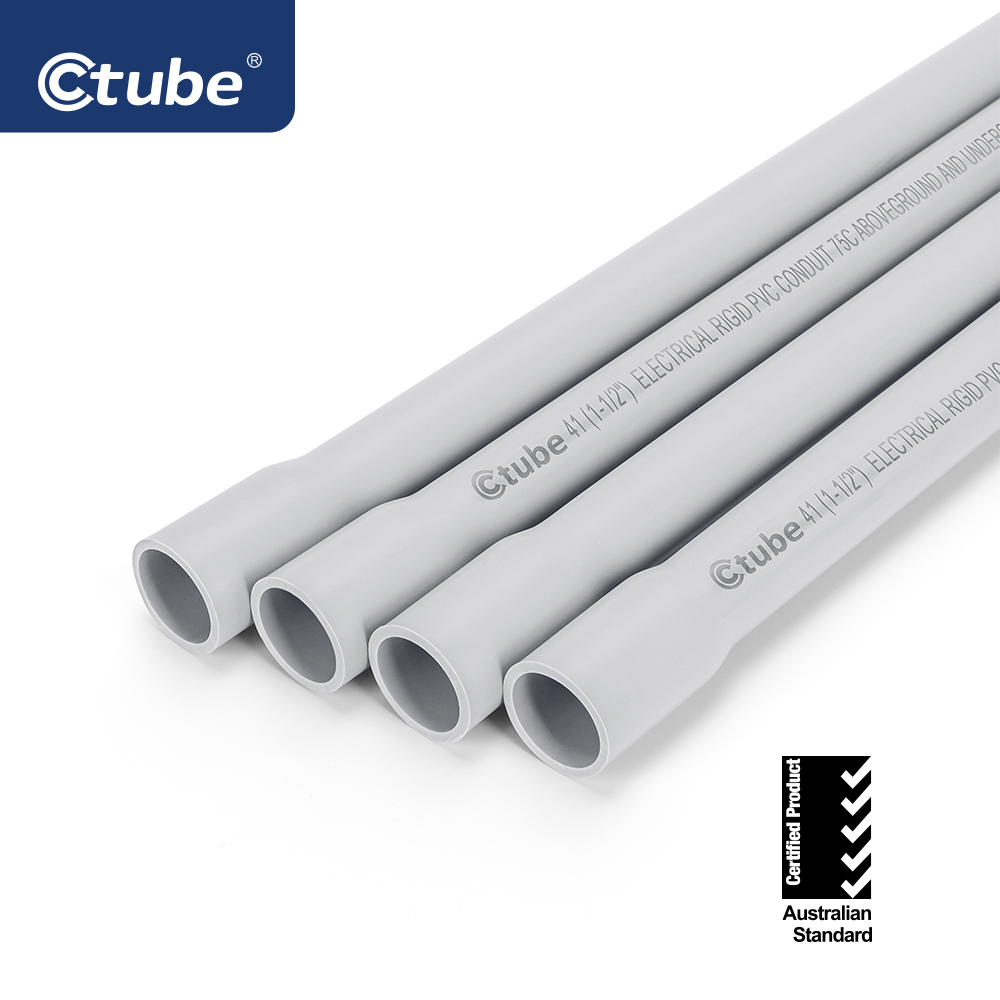Table of Contents
Toggle1. Introduction
Electrical conduit plays a vital role in protecting wiring systems within buildings and infrastructure. Choosing the right type of conduit is crucial to ensuring the safety, durability, and compliance of an electrical installation. Among the various types of conduits available, EMT (Electrical Metallic Tubing) and rigid conduit are two of the most commonly used. Both serve to protect electrical wiring, but they differ significantly in terms of material, strength, durability, cost, and suitability for different environments.
This article will delve into the key differences between EMT and rigid conduit, exploring their applications, compliance with industry standards, and corrosion protection requirements. By understanding these factors, electricians, contractors, and engineers can make informed decisions when selecting the appropriate conduit type for their projects.
2. Understanding EMT Conduit
2.1 What is EMT Conduit?
Electrical Metallic Tubing (EMT) is an unthreaded thin-wall raceway of circular cross-section designed for the physical protection and routing of conductors and cables. EMT is generally made of steel (ferrous) with protective coatings or aluminum (nonferrous).
2.2 What’s the characteristic of EMT Conduit?
2.2.1 Temperature range
EMT is typically designed to handle a temperature range from about -10°C to 60°C (14°F to 140°F), some within a temperature range of -30°C to 60°C (-22°F to 140°F). This can vary based on the raw materials used, so be sure to check with your supplier. This range covers most standard indoor and moderate outdoor conditions.
However, EMT may not perform well in extreme temperatures beyond this range. For environments with higher or lower temperatures, special considerations or alternative conduit materials might be necessary.
2.2.2 Compression Resistance
EMT generally provides good resistance to compressive forces due to its steel construction, but it is not as robust as Rigid Metal Conduit (RMC) or Intermediate Metal Conduit (IMC). The standard for compression resistance is not explicitly defined for EMT in many codes, but it is expected to withstand normal mechanical stresses encountered during installation and use. For more rigorous compression requirements, RMC or IMC might be more appropriate.
2.2.3 Burning Conditions
Aluminum, just as steel, is a non-combustible material in the form of extruded Rigid Metal Conduit orEMT. Aluminum will melt when the temperature exceeds the melting point, it does not burn. This melting point is in the range of 1,100-1,220’F (600-660’C). At these temperatures, the aluminumsurface can be seen to melt, but it does not bumn. Since EMT are considered non-combustible by the building codes, they do not have fire ratings. However, it is important to note that while EMT itself is not flammable, it can be affected by extreme heat. Under high temperatures, EMT can lose its structural integrity and potentially deform or warp. In fire scenarios, EMT can conduct heat, potentially affecting nearby wiring and components.
2.2.4 UV Tolerance
EMT is generally coated with a protective layer to resist corrosion, but it is not designed for high UV resistance. Prolonged exposure to ultraviolet (UV) rays can lead to deterioration of the coating, which may affect the conduit’s protective properties. For installations exposed to direct sunlight or harsh outdoor conditions, using UV-resistant coatings or alternative conduit materials, such as PVC or specially treated metal conduits, may be necessary.
3. What sizes and color standards do EMT Conduit have?
3.1 Sizes of Electrical metallic tubing
The outside diameter and the minimum weight of finished electrical metallic tubing shall be as indicated in Table 5.1. The standard length of electrical metallic tubing shall be 3.05 m (10 ft) ±6 mm (±1/4in).
3.2 What’s the color standards of EMT?
Colored conduit is increasingly used in building design and construction. Many facility managers recognize the benefits of colored conduit and have developed their own guidelines for its application in new projects, including smart buildings, government facilities, and educational institutions.
As of now, the NEC and other NFPA/UL standards do not establish official color codes for raceways or cables in new construction projects. The electrical industry still lacks an official color standard for conduit or EMT (Electrical Metallic Tubing). There are no prescribed colors for different circuits or voltage levels, so color choices for EMT are often influenced by architectural preferences rather than functional purposes.
Although there are no formal requirements, informal practices have developed over time. Certain industries or companies may adopt their own color-coding standards to meet specific operational needs or safety protocols.
Here are some commonly used colors for EMT (Electrical Metallic Tubing) and their typical applications:
4. When and Where Can EMT Conduit Be Used?
EMT (Electrical Metallic Tubing) is versatile and can be used in various settings, but its use is subject to specific conditions outlined by the National Electrical Code (NEC):
4.1 Permitted Uses
4.1.1 Exposed and Concealed
EMT is allowed for both exposed and concealed installations, making it suitable for a wide range of applications.
4.1.2 Corrosion Protection
EMT, including elbows, couplings, and fittings, can be installed in concrete, direct contact with the earth, or areas with severe corrosive conditions, provided that adequate corrosion protection is applied and the installation is approved as suitable for the environment.
4.1.3 Wet Locations
EMT can be used in wet locations if all supports, bolts, straps, and screws are made of corrosion-resistant materials or are protected by corrosion-resistant coatings.
4.2 Prohibited Uses
4.2.1 Physical and Environmental Limitations
EMT is not suitable for areas with severe physical damage, corrosive environments, or where it could be exposed to moisture, such as in cinder concrete without proper protection.
4.2.2 Installation Restrictions
EMT should not be used in hazardous locations unless permitted by specific NEC articles, nor should it support luminaires or equipment except for conduit bodies.
4.2.3 Corrosion Concerns
Avoid contact between dissimilar metals to prevent galvanic corrosion. Aluminum fittings are acceptable with steel EMT if not in corrosive conditions.
5. What are the Advantages of EMT Conduit?
5.1 Cost-Effective
EMT is typically more affordable than other types of metal conduits like Rigid Metal Conduit (RMC) and Intermediate Metal Conduit (IMC). This cost advantage stems from its thinner wall construction, which reduces material costs while still providing sufficient protection for electrical wiring. The reduced expense can be significant in large-scale installations or budget-sensitive projects, contributing to overall savings without compromising safety.
5.2 Ease of Installation
EMT is known for its lightweight nature, which simplifies handling and reduces the physical strain on installers. Its lighter weight allows for easier transportation and positioning on site. EMT can be cut with standard pipe-cutting tools and bent with manual or mechanical benders. This ease of manipulation not only speeds up the installation process but also minimizes the need for specialized equipment, which can further reduce labor time and costs.
5.3 Flexibility
EMT’s flexibility is one of its notable advantages. It can be easily bent and shaped to navigate around obstacles or fit specific design requirements. This flexibility is achieved with standard bending tools, which makes adjustments straightforward during installation. The ability to customize the conduit layout quickly helps in adapting to changes or complex routing needs, streamlining the installation process and improving overall system efficiency.
5.4 Aesthetic Appeal
The smooth, clean surface of EMT contributes to its aesthetic appeal, particularly in applications where the conduit may be visible. Its sleek appearance can blend well with modern architectural designs and maintain a neat look in exposed installations. This can be advantageous in settings where visual impact is a consideration, such as in open ceilings or visible conduit runs.
5.5 Versatility
EMT’s versatility is evident in its wide range of applications. It is suitable for residential, commercial, and industrial settings, accommodating various types of electrical systems. Whether used in homes, office buildings, or manufacturing facilities, EMT provides a reliable solution for protecting and routing electrical wiring. Its adaptability to different environments and installation requirements makes it a popular choice across diverse projects.
6. What are the limitations of EMT Conduit?
6.1 Limited Corrosion Resistance
EMT is coated to resist corrosion but is less durable than Rigid Metal Conduit (RMC) in highly corrosive environments. It is generally not suitable for wet or damp locations unless additional protection or special coatings are applied. For areas exposed to significant moisture or corrosive substances, alternative conduit types with enhanced water resistance, such as PVC or specially coated metal conduits, are preferable.
6.2 Less Robust Protection
Compared to RMC or Intermediate Metal Conduit (IMC), EMT offers less physical protection due to its thinner walls. This makes it more susceptible to damage from impacts or mechanical stress. In applications where substantial physical protection is necessary, such as in areas with heavy equipment or high traffic, EMT might not provide sufficient safeguarding for the wiring it encases.
6.3 Not Suitable for High-Voltage Applications
EMT is generally not recommended for high-voltage applications where additional insulation and protection are crucial. Its design and construction are intended for lower voltage and indoor applications where the risk of electrical faults and exposure is lower. For high-voltage scenarios, conduits with greater insulation and protective features are required.
6.4 Requires Proper Support and Installation
To ensure optimal performance, EMT must be properly supported and secured according to code requirements. Inadequate support or improper installation can lead to problems such as sagging or misalignment of the conduit, which can affect the overall safety and functionality of the electrical system. Proper installation practices are essential to avoid these issues.
6.5 Less Insulation
EMT provides only a physical barrier and does not offer insulation for the electrical wiring inside. Additional insulation and grounding measures are often needed to ensure the safe and effective operation of the electrical system, particularly in sensitive or complex installations. The lack of inherent insulation in EMT means that extra steps must be taken to meet safety and performance requirements.
7. Understand Rigid Conduit
7.1 What’s rigid conduit?
Rigid conduit refers to a type of electrical conduit characterized by its solid, thick-walled construction. This conduit is designed to provide a robust and durable protective pathway for electrical wiring. Unlike flexible conduits, rigid conduits are rigid and inflexible, offering superior protection against physical damage and environmental factors.
Rigid conduits can be non-metallic and metallic, and different types fall within those categories. Metal conduits are generally made of coated steel, stainless steel, or aluminum, with or without the threadable raceway. Non-metallic, unthreaded, smooth-walled tubing is available in multiple substrates including high-density polyethylene, PVC, and RTRC (fiberglass).
It is important to note that, depending on custom and context, the term “rigid conduit” is sometimes used interchangeably with “rigid metal conduit” to refer to the metal type specifically. However, in a broader sense, it can also include other rigid types like polyvinyl chloride (PVC) conduit.
7.2 What’s the types of Rigid conduit?
7.2.1 Rigid metal conduit (RMC)
Rigid Metal Conduit (RMC) is a threadable raceway of circular cross section designed for the physical protection and routing of conductors and cables. (Refer in NEC article 344)
The construction of Rigid Metal Conduit (RMC) is regulated under various standards, such as NEC 344.100, which specifies the materials that can be used to manufacture RMC. According to this standard, RMC must be made from one of the following materials:Steel with protective coatings, aluminum, red brass, stainless steel.
7.2.2 Galvanized Rigid Steel Conduit (GRC)
It’s worth noting that Galvanized Rigid Steel Conduit (GRC) is a specific type of Rigid Metal Conduit (RMC) made from galvanized steel. The galvanization process involves coating the steel with a layer of zinc to enhance its corrosion resistance, making GRC particularly suitable for outdoor and industrial applications where exposure to moisture, chemicals, or other corrosive elements is a concern.
Because GRC is commonly referred to as RMC, there can be some confusion when purchasing. Therefore, it is essential to confirm with your supplier exactly what materials are used in the construction of the conduit to ensure it meets the specific requirements of your project. This distinction is important because, while GRC offers excellent durability and corrosion resistance, other materials like aluminum, red brass, or stainless steel may be more suitable depending on the application and environmental conditions.
In addition to Galvanized Rigid Conduit (GRC), there are other types of rigid conduits, including Rigid Aluminum Conduit (RAC) and Rigid Steel Conduit (RSC), each serving specific purposes based on their material properties. The names of these conduits directly indicate the material they are made from.
Rigid Aluminum Conduit (RAC) is made from lightweight yet durable aluminum, offering excellent resistance to corrosion and making it ideal for both indoor and outdoor applications where ease of handling and reduced weight are beneficial.
Rigid Steel Conduit (RSC), on the other hand, is constructed from robust steel, providing superior strength and mechanical protection for electrical wiring in harsh or high-impact environments.
Both RAC and RSC offer distinct advantages depending on the installation conditions and requirements, giving users flexibility in choosing the appropriate conduit material for their specific needs.
Always verify the material specifications with your supplier to ensure you are getting the right type of conduit for your needs, particularly when the term “RMC” is used interchangeably with “GRC.”
7.2.3 Intermediate Metal Conduit (IMC)
Intermediate Metal Conduit (IMC) is a steel threadable raceway of circular cross section designed for the physical protection and routing of conductors and cables. (Refer in NEC article 342)
IMC shall be made of one of the following: steel with protective coatings, and stainless steel. Intermediate metal conduit (IMC) weighs approximately 33% less than rigid metal conduit (RMC).
7.2.4 RTRC Conduit (Reinforced Thermosetting Resin Conduit)
Reinforced Thermosetting Resin Conduit (RTRC) is a rigid nonmetallic raceway of circular cross section, with integral or associated couplings, connectors, and fittings for the installation of electrical conductors and cables. (Refer in NEC article 353)
RTRC conduit also known as fiberglass conduit, is created by tension-winding strands of fiberglass over a rotating mandrel, before impregnating the strands with resin and curing under high temperature, resulting in high flexural strength and high-temperature resistance. RTRC features for its corrosion resistance , UV stability, superior temperature range (including excellent handling in low temperatures.
7.2.5 Rigid PVC Conduit
Rigid Polyvinyl Chloride Conduit (PVC) is a rigid nonmetallic raceway of circular cross section. (Refer in NEC article 352)
Rigid PVC conduit is crafted from polyvinyl chloride, a highly durable plastic known for its exceptional resistance to moisture, chemicals, and environmental factors. The specific formulation of PVC used for conduit often includes additives to enhance properties such as UV resistance, flexibility, and impact resistance. These additives ensure the conduit performs well in various conditions, including extreme weather and exposure to sunlight.
8. What’s the sizes of Rigid Conduit?
RTRC is a bit more specific, and based on information from some of the vendors, we know that fiberglass has a range of different types of electrical conduit to meet the requirements for different types of jobs.
For example , IPS series have Standard Wall (SW), thickness .070, Medium Wall (MW), thickness .096 ,Heavy Wall (HW), thickness 110, Extra Heavy Wall (XW), thickness 250.
It’s important to note that the dimensions listed here, along with the corresponding wall thickness, may vary slightly depending on the supplier. These variations fall within the standard acceptable range. For specific wall thickness information, please confirm directly with the supplier.
9. What’s the advantage of rigid conduit?
9.1 Durability and Strength
Rigid conduit is highly durable and resistant to physical damage. Its solid construction protects electrical wiring from impacts, crushing, and other potential hazards, making it suitable for both exposed and concealed installations in demanding environments.
9.2 Protection Against Environmental Factors
Rigid conduit provides excellent protection against environmental elements such as moisture, chemicals, and UV radiation. This makes it ideal for outdoor installations, underground wiring, and environments where exposure to harsh conditions is a concern.
9.3 Fire Resistance
Certain types of rigid conduit, such as steel conduit, offer fire-resistant properties, helping to contain the spread of flames in the event of a fire. This enhances the overall safety of the electrical system.
9.4 Long Lifespan
Due to its robust construction and resistance to corrosion and wear, rigid conduit has a long service life. This reduces the need for frequent replacements or repairs, leading to lower maintenance costs over time.
9.5 Versatility in Applications
Rigid conduit is versatile and can be used in a wide range of applications, from residential to industrial environments. It is suitable for both above-ground and underground installations, as well as in special environments like coastal areas or high-temperature settings.
10. What’s the application of EMT and rigid conduit?
10.1 Industrial Environments
In industrial settings such as factories, warehouses, and plants, both EMT and rigid conduit are used for protecting electrical wiring from harsh conditions. Rigid conduit is preferred for areas with heavy machinery, high traffic, and exposure to chemicals or moisture, due to its robust nature. EMT, being lighter and easier to install, is often used in less hazardous areas within industrial environments where the additional protection of rigid conduit is not required. For instance, EMT might be used to run wiring along ceilings and walls in a factory, while rigid conduit is used to protect wiring in areas prone to physical damage.
10.2 Commercial Environments
In commercial buildings like office complexes and retail spaces, EMT and rigid conduit both find applications. EMT is commonly used due to its ease of installation and lower cost, making it suitable for areas where aesthetics are important and high levels of protection are not as critical. It is often installed within walls, ceilings, and floors. Rigid conduit, on the other hand, is used in areas with higher risks of physical damage or where superior protection is needed, such as in data centers or retail stores where the wiring must be safeguarded against potential damage.
10.3 Residential Environments
In residential settings, EMT and rigid conduit serve different purposes. EMT is often used for indoor applications where a less robust conduit is sufficient, such as in basements or garages. Its flexibility and ease of installation make it ideal for residential wiring systems. Rigid conduit is employed for outdoor wiring, main electrical service panels, and areas prone to moisture, such as garden lighting installations or wiring for detached structures. Its durability and resistance to environmental factors make it a good choice for these applications.
10.4 Underground Installations
Rigid conduit is particularly effective for underground installations due to its robust protection against soil conditions and water ingress. It is commonly used to run electrical cables from utility poles to homes or for outdoor lighting systems. EMT has lower resistance to environmental factors and physical damage. For optimal performance in underground settings, it is essential to properly seal all joints and select rigid conduit that meets requirements for high crush resistance and corrosion protection.
10.5 Special Environments
In special environments, such as coastal areas or high-temperature settings, both EMT and rigid conduit have specific roles. Rigid conduit, made from materials like PVC or galvanized steel, is chosen for its corrosion resistance in coastal areas where saltwater and humidity are prevalent. EMT, while generally not as resistant to corrosion, can be used in less severe coastal conditions or in high-temperature environments where its structural integrity is adequate. Rigid conduit is preferred in extreme conditions, such as foundries or areas near furnaces, due to its ability to withstand high temperatures and maintain its protective qualities.
11. Requirements for Corrosion Protection of Rigid Metal Conduit and Electrical Metallic Tubing
We’ve highlighted various types of metallic conduits, renowned for their durability and strength. However, these metallic conduits have notable drawbacks compared to non-metallic options. Metallic conduits are electrically conductive and highly susceptible to corrosion, which can be a significant issue. Consequently, the NEC (National Electrical Code) and NEMA (National Electrical Manufacturers Association) place a strong emphasis on corrosion control requirements for these materials.
In 1965 a new requirement was added to the National Electrical Code. The requirement was that “raceway be suitable for the corrosive environment to which it is exposed.” Since there was no conclusive way to prove the suitability of raceways for their environments, UL conducted surveys as well as field and laboratory tests. The guidelines for supplementary corrosion protection that appears in the UL Certification Database were based on this data.
11.1 In Concrete
When Rigid Metal Conduit (RMC) or Intermediate Metal Conduit (IMC) is installed in concrete, additional corrosion protection is typically not required. For steel Electrical Metallic Tubing (EMT) placed in a concrete slab at grade level or above, supplementary corrosion protection is generally unnecessary. However, if steel EMT is embedded in a concrete slab below grade, additional protection might be necessary.
11.2 In Soil
UL guidelines indicate that RMC or IMC in direct contact with soil generally does not require supplementary corrosion protection. However, if the soil is highly corrosive, with a resistivity of less than 2000 ohm-centimeters, additional protection may be needed. Local utilities often measure soil resistivity, and the Authority Having Jurisdiction (AHJ) will decide if extra protection is required. EMT exposed to soil usually needs supplementary corrosion protection.
11.3 Transition from Concrete to Soil
UL guidelines also note that severe corrosion can occur where steel conduit or EMT exits concrete and enters soil. NEMA/STI conduit manufacturers recommend providing supplementary corrosion protection for at least 4 inches on each side of the point where the raceway transitions from concrete to soil. In coastal regions, where salt air is a factor, NEMA/STI recommends applying the same protection method for EMT emerging from concrete into the salty environment.
To prevent galvanic corrosion, it’s important to avoid contact between dissimilar metals within an electrical conduit system whenever possible. Galvanic action occurs when two different metals are in contact in the presence of an electrolyte, leading to accelerated corrosion of one of the metals.
12. What standards have specific tests and regulations for EMT and rigid conduit?
12.1 National Electrical Code (NEC)
Article 358: This code provides guidelines for the installation and use of EMT, covering aspects such as securing, supporting, and protecting the conduit.
NEC Article 342, 344, 355, 352: Provides the regulations for rigid conduit, covering installation requirements, grounding and bonding, and protection against corrosion.
12.2 Underwriters Laboratories (UL) Standards
UL 797: Specifies safety requirements for EMT, including material quality, construction, and performance testing.
UL 6: This standard applies to rigid metal conduit (RMC) and includes tests for physical properties, such as tensile strength, threading, and impact resistance, as well as coating adhesion and corrosion resistance.
UL 651: covers the requirements for Schedule 40 and Schedule 80 rigid PVC conduit and fittings used for electrical installations.
12.3 American National Standards Institute (ANSI)
ANSI C80.3: Defines the dimensions and tolerances for EMT, ensuring it meets compatibility and performance standards.
ANSI C80.1: Covers rigid steel conduit and sets forth the requirements for dimensions, material properties, coatings, and performance testing.
12.4 Canadian Standards Association (CSA)
CSA-C22.2 No. 83.1-07: This CSA standard provides detailed specifications for EMT and elbows, including material quality, construction, and performance criteria. It ensures that these components are suitable for use as metal raceways in electrical installations.
CSA C22.2 No. 45.2: Applies to rigid metal conduit, specifying requirements for physical properties, coatings, and mechanical performance tests.
CSA C22.2 No. 211.2:06: Provides the requirements for rigid PVC (polyvinyl chloride) conduit and fittings used in electrical installations.
Here are just a few examples of standards for reference. For more detailed information, please consult the relevant documents according to your specific needs.
13. What’s the difference between EMT and Rigid conduit?
13.1 Cost
EMT (Electrical Metallic Tubing) is generally more affordable than Rigid Conduit due to its design and construction features. EMT is manufactured with a thinner wall thickness and lighter weight, which results in a lower cost per linear foot. The thinner walls mean that less material is used in its production, directly reducing material costs. Additionally, the lightweight nature of EMT simplifies transportation and handling on-site, further lowering overall expenses.
The ease of handling EMT contributes to quicker installation times. EMT can be easily bent with standard conduit benders and cut with common tools like a hacksaw or pipe cutter. This straightforward installation process requires minimal specialized equipment, which translates into lower labor costs. The reduced need for complex tools and fewer handling challenges make EMT a cost-effective choice for many electrical applications.
In contrast, Rigid Conduit comes with higher costs due to its robust construction. It features a thicker wall and heavier gauge, meaning more material is used in its production, which leads to higher material costs per linear foot. The increased weight of Rigid Conduit also makes it more cumbersome to transport and handle, adding to logistical expenses.
Installation of Rigid Conduit requires specialized tools for cutting and threading, and bending is not typically performed; instead, sections are connected with threaded fittings or other specialized connectors. This complexity in installation requires more time and effort, resulting in higher labor costs. Despite the higher costs, Rigid Conduit offers superior protection and durability, making it suitable for more demanding environments where these attributes are crucial.
13.2 Buried Depth
The minimum cover requirements for underground wiring installations are detailed in Table 300.5(A) of the NEC. This table specifies the cover depths for various wiring methods in different locations. Generally, direct burial cables or conductors must be buried at least 24 inches deep, while rigid metal conduit (RMC) or intermediate metal conduit (IMC) requires a minimum depth of 6 inches. Special conditions are also addressed in the table; for instance, if rigid metal conduit is installed in solid rock and encased in at least 2 inches of concrete, the minimum cover requirement is reduced to 2 inches.
13.3 Temperature Range
When selecting conduit materials, it’s important to consider their temperature ranges and applications, as different materials offer varying levels of performance.
EMT (Electrical Metallic Tubing) typically operates within a temperature range of -30°C to 60°C (-22°F to 140°F), making it suitable for standard indoor environments.
RMC (Rigid Metal Conduit) and IMC (Intermediate Metal Conduit), both made from galvanized steel, are designed for more demanding conditions, with temperature ranges often between -55°C and 100°C (-67°F to 212°F), providing robust protection in industrial and outdoor settings.
PVC Conduit, being non-metallic, generally supports temperatures from -25°C to 60°C (-13°F to 140°F), and is ideal for underground and wet environments.
RTRC (Reinforced Thermosetting Resin Conduit) offers superior resistance to extreme temperatures, typically from -40°C to 120°C (-40°F to 248°F), and is used in harsh industrial conditions.
It’s essential to note that temperature tolerances can vary among different suppliers due to variations in raw materials and protective coatings. For instance, Ctube’s Low Smoke Halogen Free series of PVC conduit, despite being made from PVC, is designed to withstand temperatures ranging from -45°C to +150°C (-49°F to 302°F), while their Solar series products are specifically designed to endure temperatures from -15°C to +105°C (+5°F to 221°F), showcasing how advanced formulations can extend performance beyond standard specifications.
FAQs
1. What is the difference between EMT conduit and IMC?
IMC (Intermediate Metal Conduit) is a type of conduit that is lighter than RMC (Rigid Metal Conduit) but heavier and more durable than EMT (Electrical Metallic Tubing). While EMT is a thin-walled, lightweight conduit ideal for indoor applications and easier installation, IMC offers a middle ground with greater strength and protection against physical damage and corrosion, making it suitable for both indoor and outdoor use. IMC provides a balance of durability and ease of handling, making it a versatile choice in many electrical installations.
2. Is RMC the same as RGS or EMT?
RGS is a specific type of RMC made from galvanized steel. RGS means Rigid Galvanized Steel. RMC and IMC are very closely related. Both made of threaded ends and coupled with threaded fittings, and can involve threadless fittings if applicable.
The difference is that IMC has thinner walls, and is made from a stronger alloy of steel to compensate. They are both considered equally strong and generally can be used in the same applications. IMC has the advantage of being cheaper, lighter in weight, and having slightly more fill area in the same trade size, while RMC is generally more available and easier to field work (threading, bending, etc).
EMT cannot be threaded, and is built up of couplings and connectors that either attach by setscrews or compression glands. EMT is commonly used as an interior raceway, in contrast to its rigid counterpart. EMT is not as robust against physical damage, as RMC and IMC, and is therefore not to be used where an inspector would say it is “subject to physical damage”.
3. Can EMT (Electrical Metallic Tubing) and rigid conduit can be bent?
Yes, electrical Metallic Tubing (EMT), often referred to as “thin-wall,” is lighter and has thinner walls, making it easy to bend. However, other types of rigid conduit are much harder to bend due to their strength. Bending rigid conduit is generally not recommended; instead, it’s advisable to use conduit fittings to navigate corners or opt for flexible conduit depending on the requirements.

